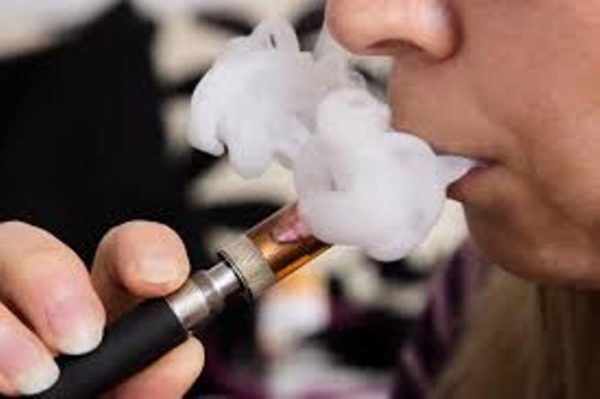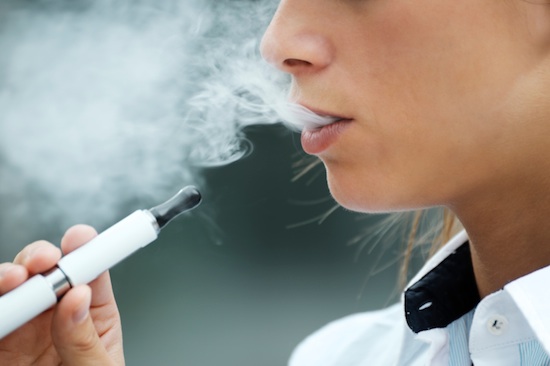
An electronic cigarette (e-cigarette) is a handheld electronic device that vaporizes a flavored liquid, which the user inhales. The process of inhaling is known as vaping. The fluid in the e-cigarette is usually made of nicotine, propylene glycol, glycerine, and flavorings.
The Chinese pharmacist, Hon Lik is credited for inventing the modern e-cigarette in 2003. Since the device was introduced on Western markets, its use has risen significantly. In the United Kingdom for example, users of the device have increased from 700,000 in 2012 to about 2.6 million in 2015.
The United States, too, has significant number of users. However, a new study in the country has revealed that the number of the country’s teenagers using the device is increasing exponentially. The study said the vaporizing trend in the country has promoted nicotine use to levels not seen since the 1990s.
The researchers at the University of Southern California (USC) based their findings on the assessment of 5,490 high school seniors, who graduated in 1995, 1998, 2001, 2004 and 2014. The study has been accepted in the journal of American Academy of Pediatrics.
The study said the number of teenagers who reportedly smoked cigarettes or e-cigarettes went up from about 9% in 2004, to almost 14% in 2014. According to the study, the pattern recurred in various groups of adolescents who took part in the study, including males and females, Hispanics and non-Hispanic whites. While the overall number of people smoking cigarettes has fallen, the combined figure of people smoking cigarettes and vaping e-cigarettes has soared.
Lead author of the study, Dr Jessica Barrington-Trimis, a research associate at USC told the Daily Mail in an interview that vaping was eroding the progress made over the last several decades in tobacco control.
“E-cigarettes may be safer than regular cigarettes for adults who are transitioning from smoking to vaping but for youths who have never used any other tobacco products, nicotine experimentation could become nicotine addiction,” she said.
One of the authors of the study, Dr Rob McConnell, a professor of preventive medicine at USC said he believed exposure to nicotine can damage the brains of teenagers. RT English News quoted him as saying: “However, use of e-cigarettes by youths who would not otherwise have smoked results in exposure to hazards of inhaled vaporized liquids and flavorings in e-cigarettes and may result in exposure to nicotine that can damage the adolescent brain.”
One of the strong arguments made in favor of vaping, by the device manufacturers, is that the new way of smoking could help fight tobacco addiction by making people switch to e-cigarettes. However, researchers wrote in the journal of American Academy of Pediatrics that teenagers using e-cigarettes would not necessarily have taken up to smoking if regular tobacco cigarettes were the only choice. They also added that people who in other circumstances would never touch a cigarette, are now experimenting with vaping.
“E-cigarettes are not merely substituting for cigarettes… e-cigarette use is occurring in adolescents who would not otherwise have used tobacco products,” the study said.
The health effect of vaping is currently being debated by researchers. Researchers are still conducting studies to fully explore the health effect of the device. In July 2014, the World Health Organization issued a warning about potential risks of using e-cigarettes.
An opinion poll conducted by Reuters/Ipsos in April and May, also showed that 47% of Americans believe vaping is as dangerous as ordinary smoking.
You want to support Anonymous Independent & Investigative News? Please, follow us on Twitter: Follow @AnonymousNewsHQ
This article (New Study: Vaping Among Teenagers in United States Rising Fast) is a free and open source. You have permission to republish this article under a Creative Commons license with attribution to the author and AnonHQ.com








Here’s one question I would like to have been asked. Out of all of those studies How many got a family member or friend 18 or older to buy it for them? Or how many of those that were tried or used were actually stolen from shops,friends or family members. I started smoking at 9yrs old myself there were times when I was lucky enough to find a store that wouldn’t card me others i won’t so lucky. It didn’t matter I always found a way to get them by any and all means nessasary. I did the same with beer and liquor. Sometimes we would find someone outside of the store we didn’t know from Adam to buy what we wanted. Also out of all those that tried Vaping how many of those ACTUALLY contained nicotine? Not all e-liquids have Nicotine in them. You are also combining Smoking and Vaping as a whole together. These are two completely different things. While YES I strongly agree that minors have no business Smoking or Vaping for that matter but There hasn’t been an effective way to stop Human or Teenage curiosity and exploration.
This ignores two big points: the historicaly low youth smoking rates, perhaps due to diversion, along with the failure to ask if the youth used a nicotine containing device. Other evidence shows nicotine free is favoured by those previously non smokers. Trying to build the gateway myth without these factors being considered is to distort the realities.
Or to put is in the words of the director of ASH UK,
Deborah Arnott: “Bullshit!”
Almost immediately this article veers off the science truthness by listing nicotine first when stating what is in e-Vape liquid… Nicotine should be on the bottom of the list
Dr. Michael Siegel,Professor in the Department of Community Health Sciences, Boston University School of Public Health, reviewed this study.
http://tobaccoanalysis.blogspot.com/search?q=Barrington-Trimis
“…data from the national Monitoring the Future survey refute the findings in this paper. On a national level, there was a HUGE decline in current smoking among high school seniors from 2004-2014, which was accompanied by a large increase in e-cigarette use, such that the overall use of nicotine products among these youth did not change much.”
“It is also important to point out that the survey in this study did NOT ask youth whether or not they were actually using e-cigarettes with nicotine. The Monitoring the Future study reported that about 60% of youth vapers use e-cigarettes without nicotine (they only contain flavorings). Therefore, it is still possible that overall nicotine use among these California youth did not go up (since the majority of the youth e-cigarette users may not have been using nicotine-containing e-cigarettes).”